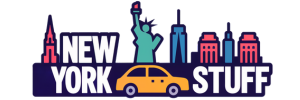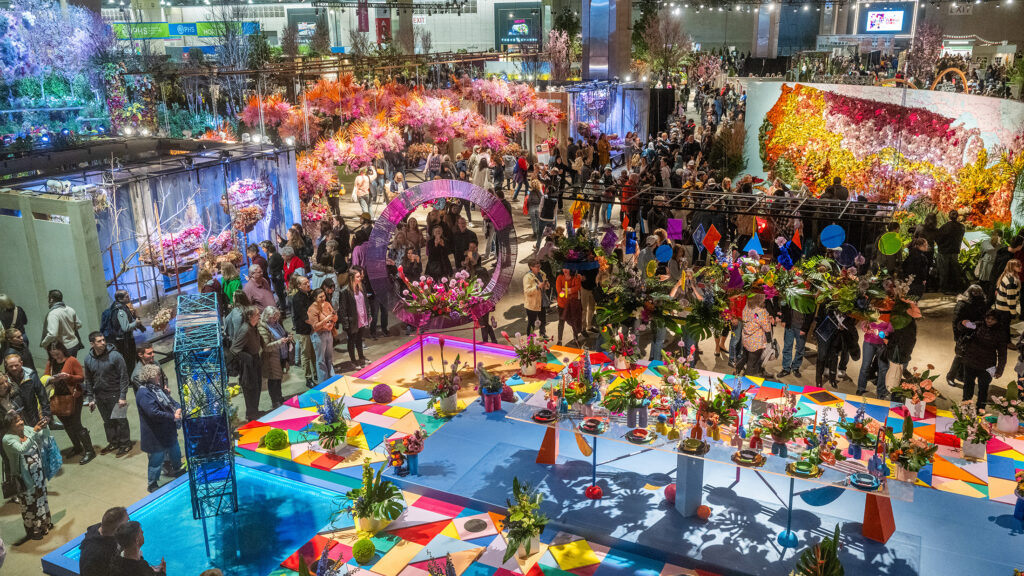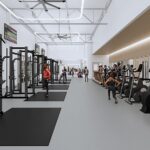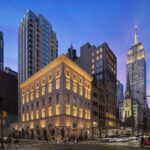I’ve covered the NY fashion week festival for years as an editor, marketer, and on-the-ground attendee, and I still get chills when the lights dim and the first look hits the runway. The NY fashion week festival is more than a schedule of shows; it’s an ecosystem where designers, editors, buyers, influencers, and street-style enthusiasts shape what we’ll all be wearing next season. In this guide, I’ll share expert insights, real-life examples, and practical tips to help you navigate NYFW like a pro, whether you’re attending in person or streaming from home.
What Is The NY Fashion Week Festival?
The NY fashion week festival, often called NYFW, is a biannual series of runway shows, presentations, trade events, and cultural activations held every February and September in New York City. It brings together top American labels and global talent to debut collections for the upcoming season, typically Fall/Winter in February and Spring/Summer in September.
While official calendars are led by the CFDA and produced in collaboration with IMG and independent venues, the “festival” aspect comes from satellite events, pop-ups, showroom appointments, after-parties, and public-facing experiences across Manhattan and Brooklyn. Think of NYFW as a citywide celebration with multiple entry points for industry insiders and fans alike.
From my own experience, the magic of NYFW lives both on and off the runway. I’ve watched polished presentations at Spring Studios, impromptu street-style shoots in SoHo, and intimate designer previews in Chelsea lofts—all in a single day.
A Brief History And Why It Matters
- Early origins: New York’s first organized “Press Week” launched in 1943 to direct attention away from Paris during wartime. It eventually evolved into New York Fashion Week.
- The Lincoln Center era: Shows centralized at Bryant Park and later Lincoln Center gave NYFW its modern identity with iconic tents.
- The decentralized model: Today’s NYFW is more flexible, with marquee venues like Spring Studios alongside galleries, warehouses, and cultural institutions across the city.
Why it matters: NYFW sets the tone for American fashion—commercially savvy, culturally plugged-in, and media-forward. It also influences retail buys, marketing campaigns, and trend direction for the next 6 to 12 months. When I sat in on a mid-morning showroom in Tribeca, I watched buyers prioritize pieces that aligned with social buzz from the night before—proof that NYFW is where creative energy meets real business impact.
How The NYFW Schedule Works
NYFW operates across several days with a mix of runway shows, presentations, and digital releases. Mornings often start with presentations or up-and-coming designers, afternoons feature established names, and evenings highlight headliners and after-parties.
What to know:
- Calendars: The CFDA publishes an official lineup, and many brands announce independently.
- Formats: Runway shows are timed, seated or standing; presentations allow attendees to walk around models and see details up close.
- Access: Invitations typically go to press, buyers, stylists, celebrities, and partners. Some events offer limited public tickets or RSVP lists via brand partners.
Insider tip: If you’re building an itinerary, anchor your day around two or three key shows and layer presentations, street-style stops, and showroom visits in the same neighborhoods to minimize transit time. I’ve learned the hard way that a 20-minute window across town is not realistic during NYFW traffic.
Where It Happens: Key Venues And Neighborhoods
- Spring Studios, Tribeca: A central hub with multiple stages, sponsor activations, and strong production.
- Chelsea and Meatpacking: Galleries and warehouses host atmospheric shows and late-afternoon events.
- SoHo: Pop-ups, presentations, and plenty of street-style.
- Brooklyn: For boundary-pushing productions, converted industrial spaces in Williamsburg, Greenpoint, and DUMBO are favorites.
Practical note from my schedule: I block SoHo midday for content capture because the fashion crowd naturally funnels through Broadway, Crosby, and Howard Streets. It’s the easiest way to see trends in the wild and meet creatives between shows.
Designers To Watch: Heritage, Headliners, And New Voices
- Heritage names: Michael Kors, Carolina Herrera, Ralph Lauren, and Tory Burch anchor the calendar with polished storytelling and broad retail influence.
- Modern icons: Proenza Schouler, Coach, Altuzarra, and Brandon Maxwell blend craft and commercial appeal.
- Emerging talent: Expect strong showings from CFDA-incubated designers, independent labels, and graduate showcases that often deliver the season’s most talked-about ideas.
From backstage to front row, I’ve found the most exciting conversations happen around emerging designers. One season, a newcomer’s knitwear engineering drew a line of buyers who had just come from a luxury house—a reminder that innovation can upstage legacy when the product is right.
Trend Radar: What Typically Dominates The Runway And Streets
While every season is distinct, NY fashion week festival trends often cluster around a few themes:
- Tailoring 2.0: Relaxed, deconstructed suits with strong shoulders and fluid trousers.
- Texture play: Shearling, boucle, liquid satin, and high-shine patent.
- American sports chic: Elevated varsity motifs, track details, and utility pockets.
- Color stories: Saturated primaries contrasted with refined neutrals and metallics.
- Accessories: Sculptural earrings, oversize totes, sleek ballet flats, and statement boots.
- Beauty: Skin-first makeup with one focal point—blurred lips or graphic liner.
Street style often amplifies runway direction with playful layering, vintage mixing, and directional footwear. I photograph shoes first; they tend to telegraph micro-trends months before they hit mainstream retail.
How To Attend: Tickets, Invites, And Public Access
There are four primary paths:
- Industry invites: Pitch editors, PR agencies, or brands with a concise media kit, audience data, and clear value.
- Accredited media: Apply through official channels if you produce editorial coverage.
- Public events: Some brands and sponsors host ticketed presentations, pop-ups, or experiential installations.
- Livestreams and digital: Most marquee shows stream on brand sites and social channels.
How I’ve secured invites:
- Start early with a polite outreach template and a portfolio link.
- Offer deliverables, not just requests—e.g., guaranteed coverage, post-show interviews, or trend reports.
- Follow up 5 to 7 days before showtime; last-minute standing tickets often open up.
Mistakes to avoid:
- Bulk emailing without personalization.
- Ignoring seating confirmations; standing access still matters for coverage and networking.
- Overbooking. Aim for depth over quantity.
Planning Your NYFW Trip: Logistics And Timing
- Book early: Hotels in Tribeca, SoHo, and Chelsea fill up. Consider Midtown for transit convenience or Brooklyn for value.
- Transit: The subway beats rideshares during peak hours. Budget extra time for security lines at venues.
- Packing list: Weather-ready layers, comfortable but polished shoes, portable charger, refillable water bottle, and a compact camera or phone with ample storage.
- Content plan: Prebuild shot lists and caption frameworks. I save templates for show notes, designer quotes, and trend callouts to speed up posting.
Budget snapshot:
- Lodging: Prices surge; plan months ahead or split with teammates.
- Food: Schedule quick, healthy options near venues. I rely on grab-and-go salads between shows.
- Wardrobe: Rent or borrow statement pieces, then mix with staples to stay comfortable.
Business Impact: Why NYFW Matters To Brands And Creators
- Retail forecasting: Buyers refine assortments based on runway direction and showroom confirmations.
- Media cycles: Editorial and social content from NYFW fuels months of coverage.
- Influencer ROI: Creators who deliver timely, high-quality content often secure long-term brand deals.
- B2B networking: PRs, stylists, casting directors, and production teams meet and hire from NYFW interactions.
One season, a backstage interview I captured turned into a yearlong consulting project for a mid-market label. Be ready with a clear pitch, crisp portfolio, and business cards or digital contacts.
Sustainability, Inclusion, And The Evolving NYFW
NY fashion week festival has made strides in:
- Responsible materials: More recycled fibers, deadstock usage, and low-impact dyes.
- Circularity: Repair, rental, and resale integrations with presentations.
- Diversity and representation: Broader casting across size, race, age, and ability, plus stories rooted in community.
Progress is real but uneven. When evaluating claims, I look for:
- Measurable goals and third-party certifications.
- Production transparency beyond buzzwords.
- Consistency across collections, not one-off capsules.
As a reporter and consultant, I’ve advised brands to publish concise impact reports during NYFW. Clear numbers build trust and press momentum.
Content Playbook: Capturing NYFW Like A Pro
What works for me:
- Morning uploads: Post a fast, snackable recap by 10 a.m. to rank in searches.
- Real-time reels: Short clips from runway finales perform well on Instagram and TikTok.
- SEO blog posts: Publish daily recaps targeting keywords like “NYFW trend report” and “NY fashion week festival schedule.”
- Email wrap-ups: A same-day newsletter with top looks, quotes, and show grades drives high open rates.
Simple workflow:
- Create a shared album per day and tag images by designer.
- Use a shot list: opener, detail, look 1, finale, front row, backstage.
- Draft CTAs in advance to speed publishing.
Safety, Accessibility, And Etiquette
- Security: Allow for bag checks and avoid oversized luggage. Keep valuables close in crowded lobbies.
- Accessibility: Many venues provide elevators and reserved seating; request accommodations ahead.
- Etiquette: Arrive early, stay off the runway path, silence devices, and avoid blocking photographers’ sightlines.
- Respect backstage: Ask before filming models or fittings.
A small courtesy goes a long way. A photographer once shifted me closer to the riser after I offered to hold their spot during lens swaps—those relationships shape your entire week.
Practical Checklist For First-Time Attendees
- Confirm invites, times, and addresses 24 hours prior.
- Map clusters of shows to minimize crosstown travel.
- Charge everything overnight; carry a backup battery.
- Prepare one standout outfit per day and a weatherproof backup.
- Save PR contacts offline for quick access.
- Schedule 30-minute windows for note-taking and uploads.
If nerves hit, remember: everyone started with a first NYFW. Focus on learning, observing, and creating one piece of content you’re proud of each day.
Frequently Asked Questions Of NY Fashion Week Festival
When Is The NY Fashion Week Festival?
NYFW happens twice a year: February for Fall/Winter collections and September for Spring/Summer. Exact dates are published on the official calendar several months in advance.
Can The Public Attend NYFW?
Yes, selectively. While most shows are invite-only, some brands, sponsors, and cultural partners offer ticketed events, presentations, or public experiences. Many shows also livestream.
How Do I Get An Invitation?
Build a concise pitch with your media kit, audience data, and coverage plan. Email brand PR contacts and follow up respectfully. Standing tickets are more accessible and still valuable.
What Should I Wear?
Aim for comfortable polish. Choose supportive shoes, weather-appropriate layers, and one statement piece for photos. Pack a backup outfit in case of rain or sudden cold snaps.
Are There Virtual Options?
Yes. Most headline shows stream on brand websites or social platforms. Consider hosting live recaps, Twitter threads, or short-form video reactions to engage your audience.
Where Can I See Street Style?
SoHo, Tribeca near Spring Studios, the Meatpacking District, and popular Brooklyn venues are reliable street-style hubs before and after shows.
Is It Worth It For Emerging Creators?
Absolutely, if you plan strategically. Even one day of strong coverage can lead to partnerships. Focus on niche angles, quick turnarounds, and relationship-building.
Wrap-Up And Next Steps
NY fashion week festival is where creativity, commerce, and culture collide—on runways, sidewalks, and screens. With smart planning, clear goals, and a storyteller’s mindset, you can turn NYFW into real opportunities: better content, stronger relationships, and sharper trend intuition. Start by mapping the next season’s dates, crafting your outreach list, and building a shot-ready gear kit.
If this guide helped, subscribe for my NYFW trend reports, sign up for my show-day checklists, and drop your questions in the comments so I can tailor the next update to your needs.
Watch This Video on NY fashion week festival






